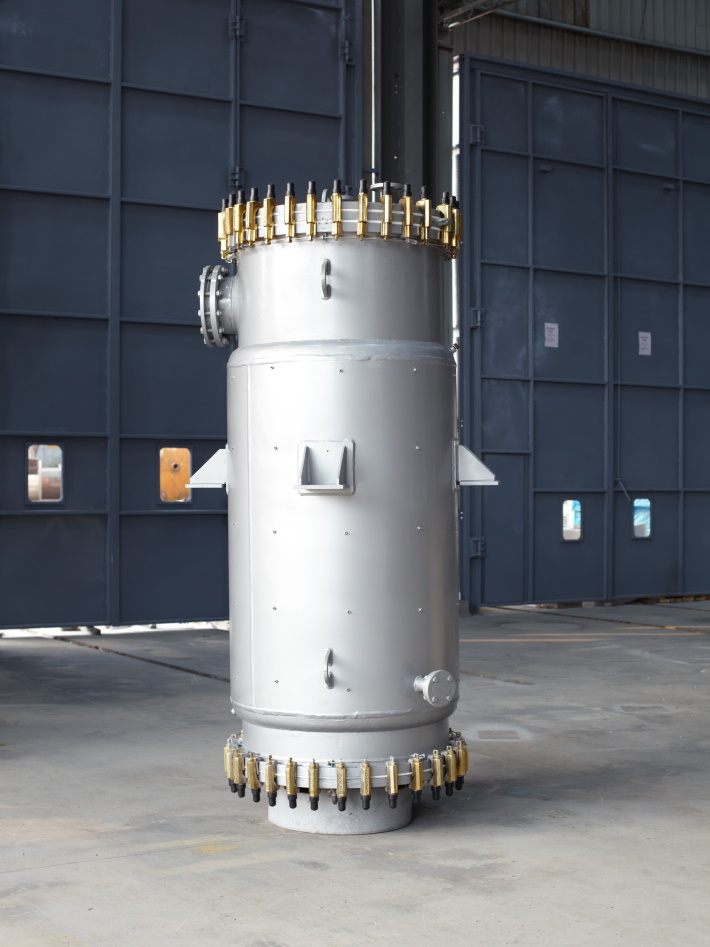Introduction
Glass lined heat exchangers are most commonly used in the chemical, pharmaceutical, agrochemical, and food processing sectors. Their glass coating, typically made from borosilicate or enamel glass, resists attack from acids, alkalis, solvents, and other reactive compounds that would corrode traditional metal surfaces. This protective layer ensures product purity, system integrity, and extended equipment life, even in the harshest operating conditions
In industries where highly corrosive, reactive, or ultra-pure fluids are processed, conventional metal heat exchangers often fall short in terms of longevity and compatibility. This is where Glass Lined Heat Exchangers offer a groundbreaking solution. These specialized exchangers merge the mechanical strength of steel with the chemical inertness of glass, resulting in a robust, corrosion-resistant system ideal for aggressive chemical processing environments.
Working Principle
The working mechanism of a glass lined heat exchanger is fundamentally the same as any other heat exchanger—transfer of heat between two fluids without allowing them to mix. What differentiates it is the glass coating on the internal surfaces that come in contact with the process fluids.
Step-by-step process:
- Fluid A (hot fluid) enters the tube or shell side.
- Fluid B (cold fluid) flows through the opposite channel (tube or shell).
- Heat transfers from the hot fluid to the cold fluid across the glass lined barrier.
- The glass lining prevents corrosion, resists chemical attacks, and maintains cleanliness.
This system enables safe and efficient thermal exchange even when handling aggressive media like hydrochloric acid, nitric acid, or chlorinated solvents.
Design & Construction
Glass lined heat exchangers come in various designs, most commonly the shell and tube type. Their construction includes:
- Base Material: Generally carbon steel or stainless steel for mechanical strength.
- Glass Lining: An inner glass layer, typically fused at high temperatures (850–950°C), forming a strong, chemically inert coating.
- Tube Material: Can be glass lined steel, pure glass, graphite, or PTFE-lined metal, depending on compatibility and thermal performance.
The internal glass surface is smooth, non-porous, and resistant to contamination, ensuring safe handling of delicate or hazardous substances.
Materials Used
- Shell: Carbon Steel or Stainless Steel
- Lining: Fused Glass (Borosilicate, Enamel)
- Tubes: Glass, Graphite, PTFE-lined, or special alloy
- Gaskets: PTFE, Viton, or other chemically resistant materials
- Nozzles: May be glass lined or fitted with liners
Limitations
- Fragility: Though chemically strong, glass is mechanically brittle. Mishandling can cause cracks.
- Thermal Shock Limitations: Sudden temperature changes can cause damage if outside allowed limits.
- Pressure Ratings: Lower pressure tolerance compared to metallic exchangers.
- Abrasive Fluids: Not suitable for slurries or fluids containing hard particles.
Applications
Glass lined heat exchangers are indispensable in processes involving aggressive or ultra-pure fluids, such as:
- Pharmaceutical manufacturing (APIs, intermediates)
- Agrochemical processing
- Fine and specialty chemicals
- Acid condensation systems
- Food and beverage processing (acid syrups, concentrates)
- Solvent recovery and distillation systems
- Petrochemical and dye manufacturing
- Toxic effluent treatment plants
- Laboratory and pilot plants
Glass Lined Heat Exchangers offer a robust and dependable solution. Their ability to combine the thermal performance of a heat exchanger with the inertness and hygiene of glass makes them a unique asset for handling complex fluids in sensitive operations.
By offering long-term protection against aggressive chemicals, maintaining product purity, and reducing the need for costly exotic alloys, these heat exchangers contribute significantly to process safety, cost efficiency, and compliance with regulatory standards. For any industry that demands high-performance thermal transfer in a corrosive environment, a glass lined heat exchanger is not just an option—it’s a necessity.

